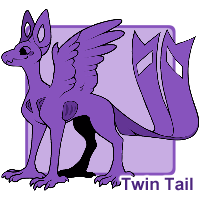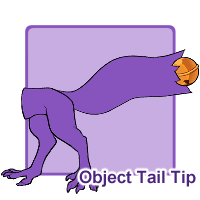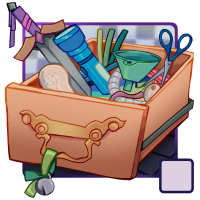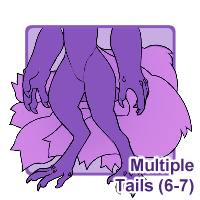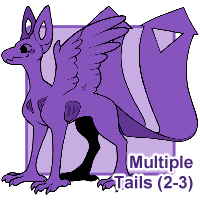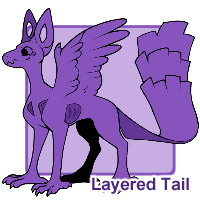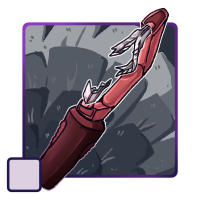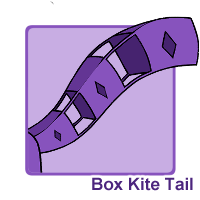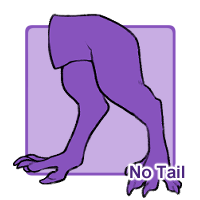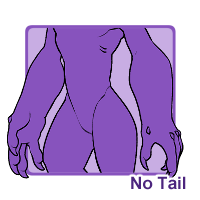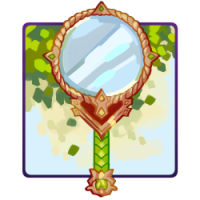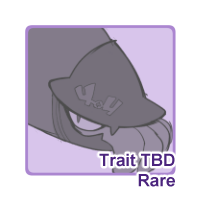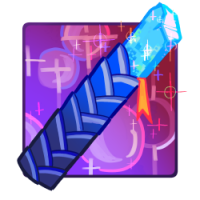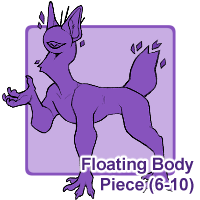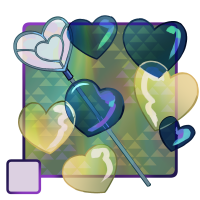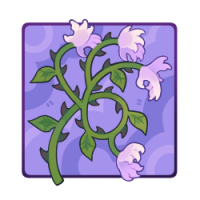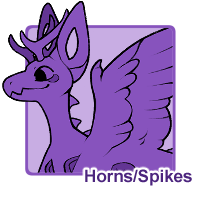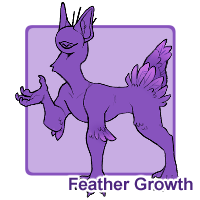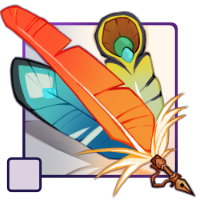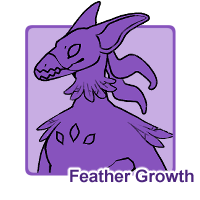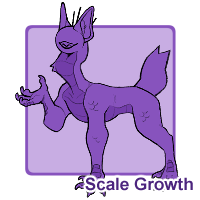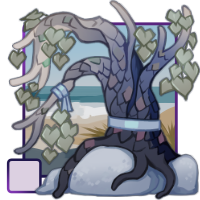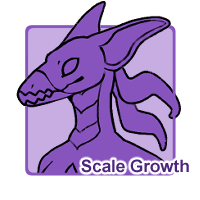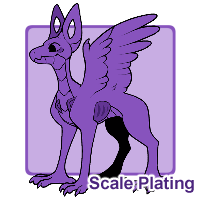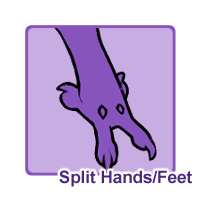Traits
[ Click here for Visual Sorter! ]
Twin Tail (Gravents) (Rare)
[Tail with a single split longer than half its length]
- Tail splits once past half the tail length
- Can be applied to any number of tails
- Each tail top can be affected by tail tip traits
- Cannot split at the base. This would be considered another tail
Object Tail Tip (CCCats) (Rare)
[Tail ends in an object of some kind]
- Tail can end in an object such as a bell, a rose or plant, a microphone, weapons, rattlesnake rattler, etc.
- Objects with multiple parts to it such as chains or multiple materials may be used as long as those parts would naturally appear as part of that object [Example: A lantern may hang from a short chain, have glass paneling, and metal casing. It would not include extra inserts such as candles, but those could be added as accessories]
- This trait is not needed when using Object Growth unless the object is different than the Object Growth [Example: A lantern tail with moss Object Growth]
- If the object glows [Light Bulb] or is metallic [Bell], it can have those effects, but the design would still require those respective marking traits if they were to appear elsewhere on the body.
- Cannot appear to replace the tail with an object
- Cannot have elemental effects
Can be applied by:
Object Tail Tip (Crooks) (Rare)
[Tail ends in an object of some kind]
- Tail can end in an object such as a bell, a rose or plant, a microphone, weapons, rattlesnake rattler, etc.
- Objects with multiple parts to it such as chains or multiple materials may be used as long as those parts would naturally appear as part of that object [Example: A lantern may hang from a short chain, have glass paneling, and metal casing. It would not include extra inserts such as candles, but those could be added as accessories]
- This trait is not needed when using Object Growth unless the object is different than the Object Growth [Example: A lantern tail with moss Object Growth]
- If the object glows [Light Bulb] or is metallic [Bell], it can have those effects, but the design would still require those respective marking traits if they were to appear elsewhere on the body.
- Cannot appear to replace the tail with an object
- Cannot have elemental effects
Can be applied by:
Multiple Tails (6-7) (Crooks) (Rare)
[Multiple tails located in standard tail placement]
- Can be any number of tails between 6 or 7
- Must be placed in standard tail location
- Tails do not need to be the same
- Tails may be affected by all tail traits, and require only one trait to cover all tails
Multiple Tails (2-3) (Gravents) (Rare)
[Multiple tails located in standard tail placement]
- Can be any number of tails between 2 or 3
- Must be placed in standard tail location
- Tails do not need to be the same
- Tails may be affected by all tail traits, and require only one trait to cover all tails
Layered Tail (Rare)
[A tail that follows standard length, but has sections that appear layered atop each other]
Can be applied by:
Box Kite Tail (Rare)
[Tail that follows the structure of a box kite]
No Tail (CCCats) (Rare)
[No tail is present]
- Cannot be affected by any tail traits
No Tail (Crooks) (Rare)
[No tail is present]
- Cannot be affected by any tail traits
Metallic Markings (Nautipods) (Rare)
[Markings that have a metallic and shiny sheen]
- Can be any color, but reflections are generally monotone, meaning highlights and shadows share general hue with the base color
- Affects any color/marking on the body, as long as it does not effect the entire body
- Can affect the blood, bones, and organs
Can be applied by:
Sparkling Markings (Nautipods) (Rare)
[Markings that sparkle and reflect light akin to glitter]
- Can be any color, but sparkles must share hue with the base color of the markings
- Can affect the particles originating from the Particle Markings trait, allowing them to be purely sparkles
- Affects any color/marking on the body, as long as it does not effect the entire coat
- Can affect the blood, bones, and organs
Can be applied by:
Floating Body Piece (6-10) (CCCats) (Rare)
[Small, shaped object floating separately from the body]
- Must be an extension from an existing part, such as an ear, horn, tail tip, fur, etc.
- Must match a color that appears on the body, but may have patterning and be affected by marking traits
- May be shaped as long as they appear to be a continuation of a body part
- May be symmetrical or asymmetrical
- Cannot resemble objects
- Cannot be shapes that float around the body purely independantly
Can be applied by:
Horns/Spikes (CCCats) (Rare)
[Horns or spikes located anywhere on the body]
- Can be pointed, antlers, be branched, spiked, blunt, square, or rounded and cylindrical. Can also be textured with swirls, overlapping scale-like effects, and carvings.
- Can be broken, notched, or cut
- Can be placed anywhere on the body
- Counts for all horns and spikes on the body. Can have multiple types at once
- Can be engraved and affected by marking traits
- Horns should not resemble objects
- Cannot obscure the body or replace a body part
- Crowns should not resemble horns
Can be applied by:
Horns/Spikes (Gravents) (Rare)
[Horns or spikes located anywhere on the body]
- Can be pointed, antlers, be branched, spiked, blunt, square, or rounded and cylindrical. Can also be textured with swirls, overlapping scale-like effects, and carvings.
- Can be broken, notched, or cut
- Can be placed anywhere on the body
- Counts for all horns and spikes on the body. Can have multiple types at once
- Can be engraved and affected by marking traits
- Horns should not resemble objects
- Cannot obscure the body or replace a body part
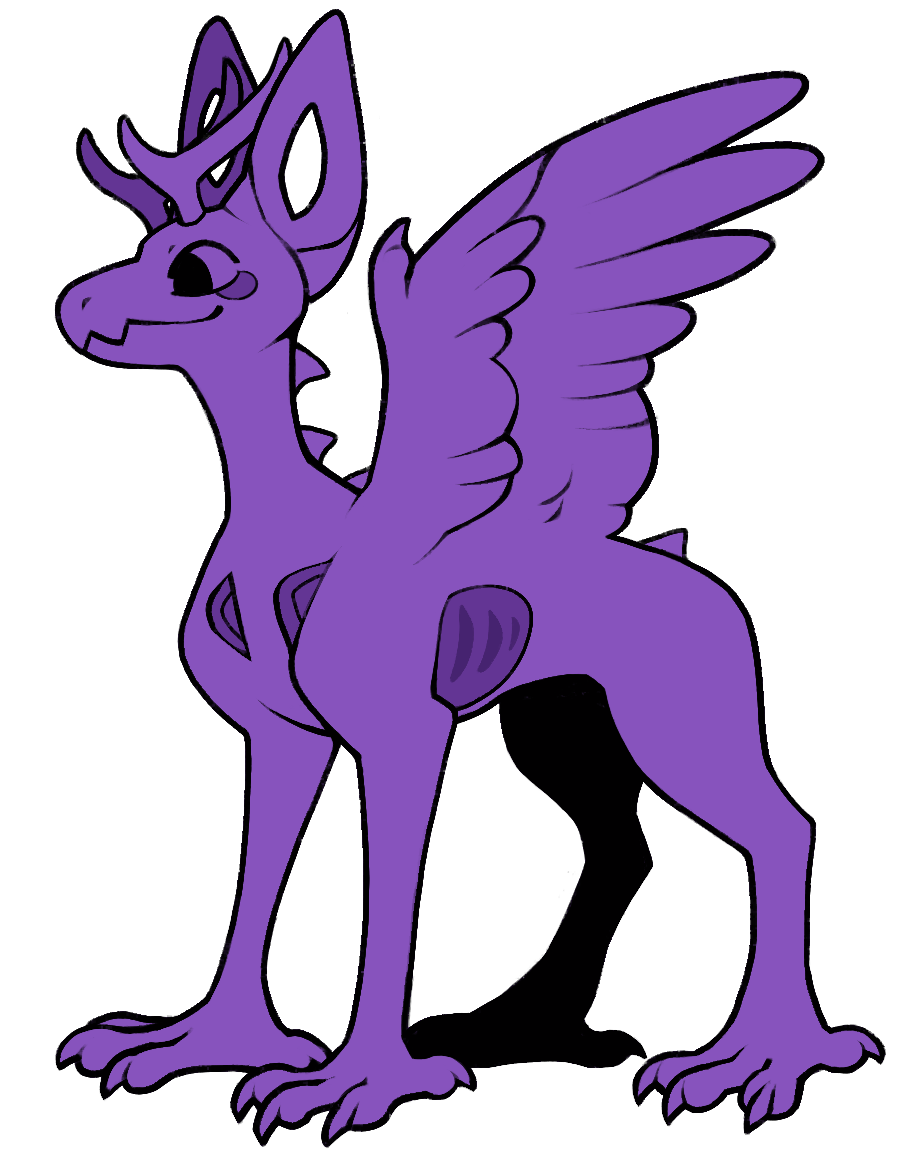
Can be applied by:
Feather Growth (CCCats) (Rare)
[Feathers growing anywhere on the body]
- Feathers can cover the entire body and replace the fur entirely
- Feathers can affect the crowns to make them resemble feathers in detail. Simple feather shapes would not require this trait
- Can be used to create a bird-like tail. Short tail is still required for the length of the tail itself, not the length of the feathers
- Feathers can be long without needing Royal Fur
- Feathers may not resemble wyvern-like wings
Can be applied by:
Feather Growth (Crooks) (Rare)
[Feathers growing anywhere on the body]
- Feathers can cover the entire body and replace the fur entirely
- Feathers can affect the tendrils
- Can be used to create a bird-like tail. Short tail is still required for the length of the tail itself, not the length of the feathers
- Feathers may not resemble wyvern-like wings
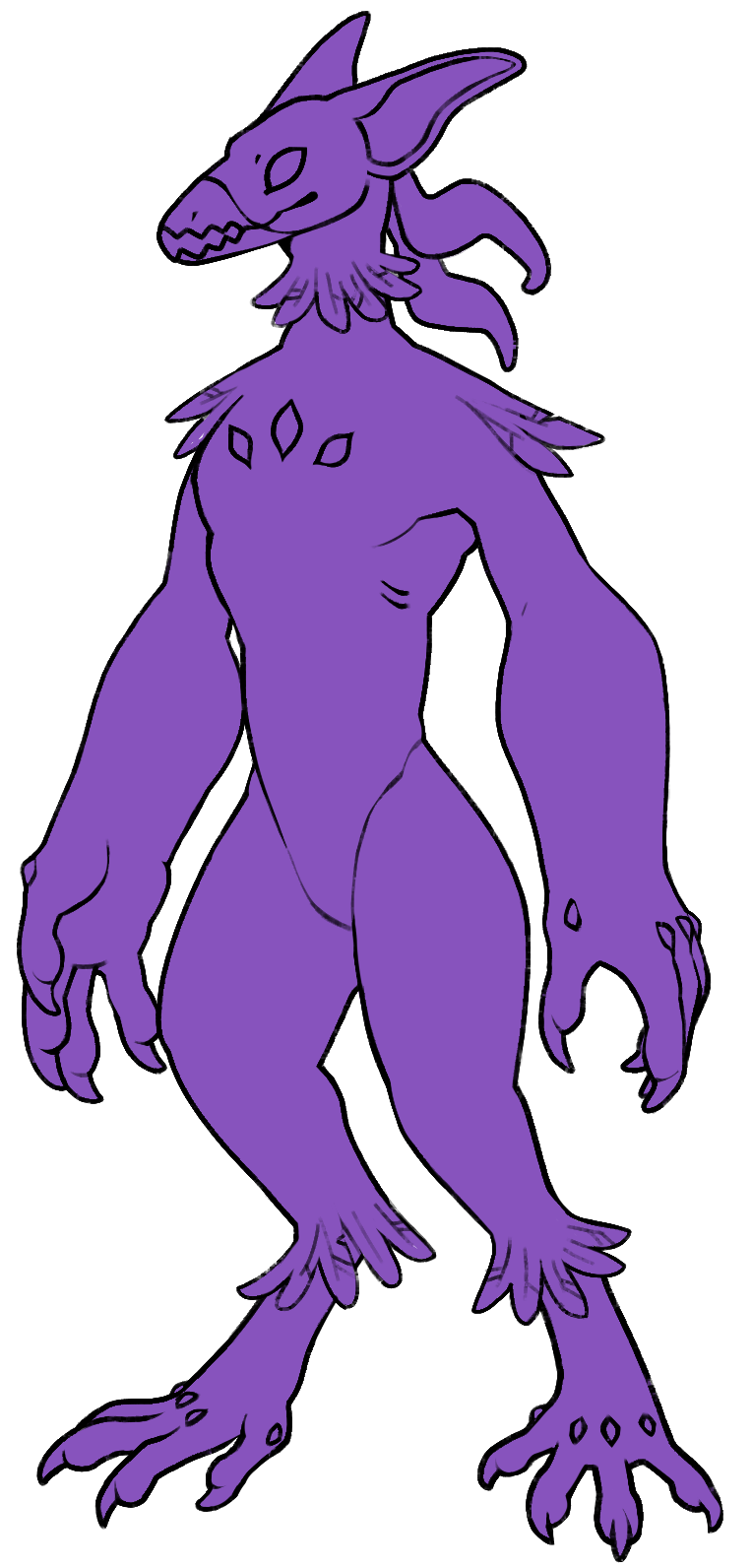
Can be applied by:
Scale Growth (CCCats) (Rare)
[Scales growing anywhere on the body]
- Scales can cover the entire body and replace the fur entirely. Sphinx Fur and Frankenstein Fur are not required for scales to fully replace the fur
- Can be simple plating, fish or reptile-like scales, and overlapping ridged scales
- May not create large, chitinous plates
- If applied to a design via the Scaled Branch item, this trait cannot be swapped to any other trait.
Can be applied by:
Scale Growth (Crooks) (Rare)
[Scales growing anywhere on the body]
- Scales can cover the entire body and replace the fur entirely
- Can be simple plating, fish or reptile-like scales, and overlapping ridged scales
- May not create large, chitinous plates
- If applied to a design via the Scaled Branch item, this trait cannot be swapped to any other trait.
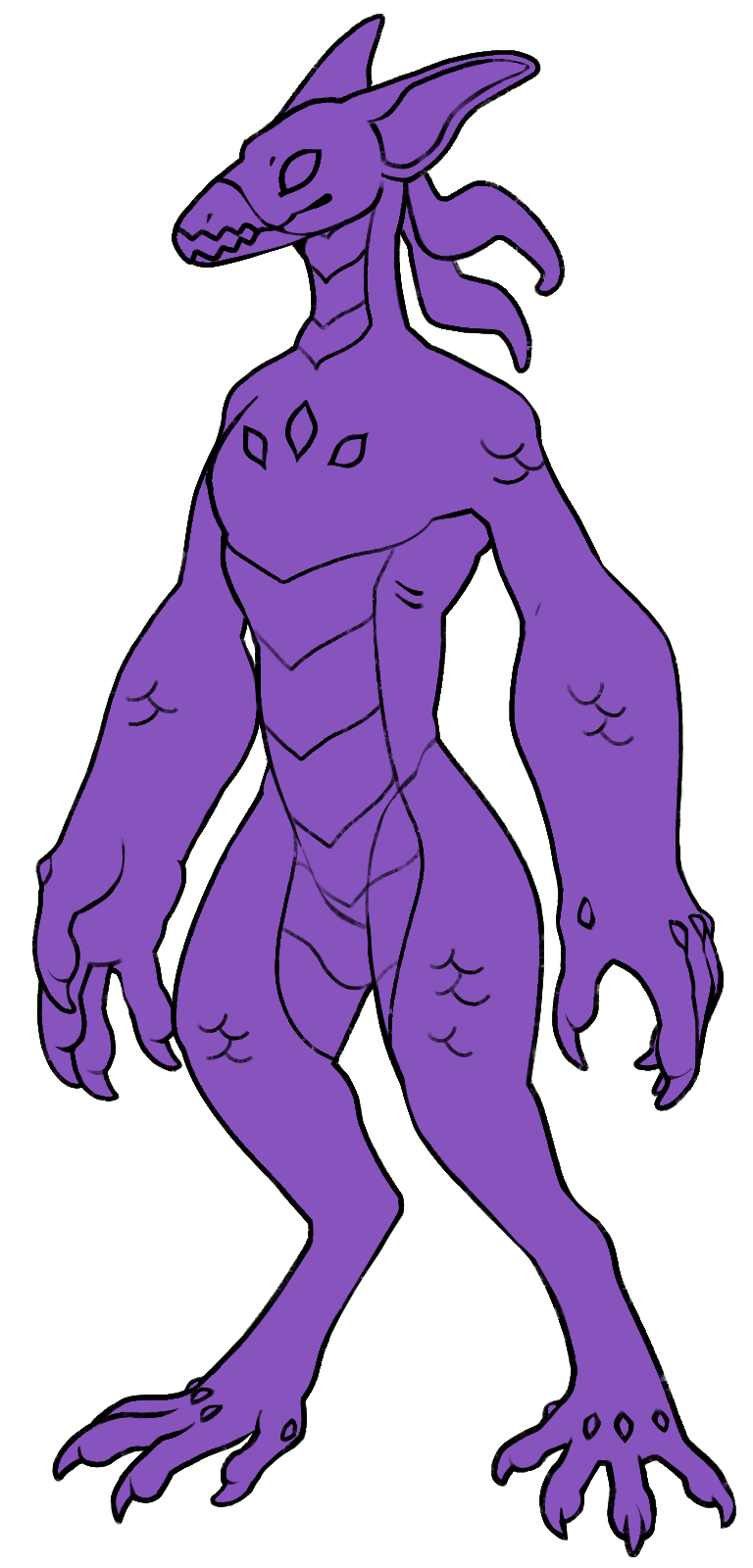
Can be applied by:
Scale Plating (Rare)
[Armor plating that is thicker than standard scales]
Can be applied by:
Split Hands/Feet (Rare)
[Hands and/or feet are divided down the center and appear chameleon-like]
- Must still have a total of 4 fingers/toes
- Must still have knuckle bones

